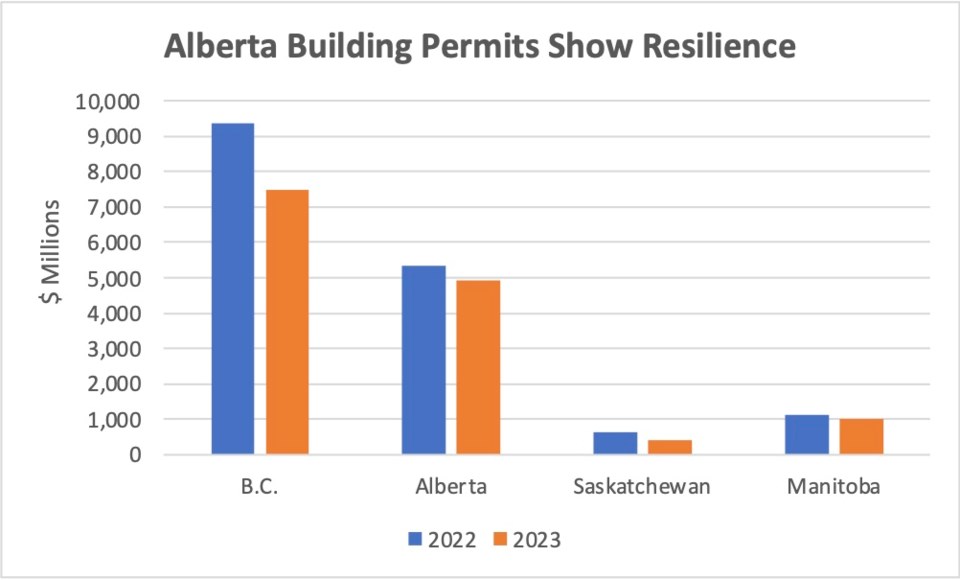Calgary was the clear star as Statistics Canada released its monthly building permits this week, with the value of issued permits rising to offset declines elsewhere in Alberta.
Permits for both residential and non-residential construction rose to $764 million in May, up from $520 million a year earlier. This drove an 8 per cent increase in permit values in the first five months of the year versus a year earlier.
It also marked an acceleration over issuances in the first quarter of the year, when total value increased just 6 per cent.
The robust activity was attributable largely to residential permits, which totaled $2.1 billion in the first five months of the year, up 7 per cent versus a year earlier. Non-residential permits increased 13 per cent but represented a small value of just over $997 million in the period. Commercial projects represented the largest share of non-residential projects, with a value of nearly $773 million.
The activity offset a decline in other metropolitan centres in Alberta.
The province’s largest metropolitan areas reported $4.9 billion in building permits during the first five months of the year, down 7 per cent from a year ago. The decline was driven by a 23 per cent drop in Edmonton, where permits approached $1.7 billion in the period.
The activity in Calgary also propelled Alberta to the strongest position in Western Canada, with permit activity resilient compared to lacklustre performances in B.C., Saskatchewan and Manitoba.
Building permits in the first five months of the year were down 20 per cent in B.C.’s metropolitan centres to $7.5 billion, while Manitoba reported a 12 per cent decline to $995 million in permit issuances.
Saskatchewan’s metropolitan centres reported the lowest permit value at $392 million in the first five months of the year, down 38 per cent from a year ago.
However, the province was unique in not seeing building activity decelerate as summer approached. While the other three Western provinces saw declines accelerate following the first quarter, Saskatchewan pared its losses as Regina saw stronger activity in both residential construction and gains versus a year ago in industrial, institutional and government projects.



